Related Research Articles

Jedda, released in the UK as Jedda the Uncivilised, is a 1955 Australian film written, produced and directed by Charles Chauvel. His last film, it is notable for being the first to star two Aboriginal actors, Robert Tudawali and Ngarla Kunoth in the leading roles. It was also the first Australian feature film to be shot in colour.
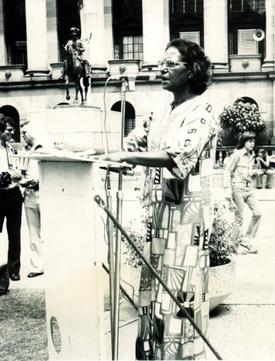
Oodgeroo Noonuccal ( UUD-gə-roo NOO-nə-kəl; born Kathleen Jean Mary Ruska, later Kath Walker was an Aboriginal Australian political activist, artist and educator, who campaigned for Aboriginal rights. Noonuccal was best known for her poetry, and was the first Aboriginal Australian to publish a book of verse.
Robert John Inverarity is a former Australian cricketer who played six Test matches. A right-handed batsman and left-arm orthodox spin bowler in his playing career, Inverarity was also one of the enduring captains in the Australian Sheffield Shield during the late 1970s and early 1980s, captaining both Western Australia and South Australia.
The Indigenous All-Stars is an Australian rules football team composed of players that identify as Indigenous Australian or with an indigenous culture.
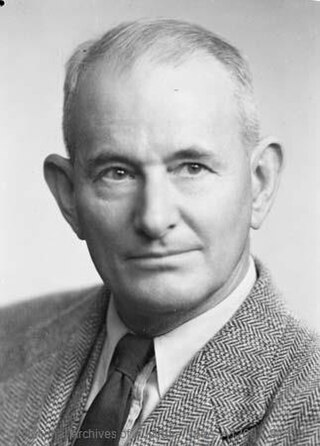
Charles Pearcy Mountford OBE was an Australian anthropologist and photographer. He is known for his pioneering work on Indigenous Australians and his depictions and descriptions of their art. He also led the American-Australian Scientific Expedition to Arnhem Land.
Ainslie Roberts was an Australian painter, photographer, and commercial artist. He is best known for his interpretations of Aboriginal legends in his Dreamtime books, written in collaboration with ethnologist/anthropologist Charles Mountford.
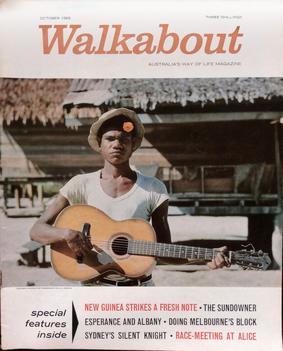
Walkabout was an Australian illustrated magazine published from 1934 to 1974 combining cultural, geographic, and scientific content with travel literature. Initially a travel magazine, in its forty-year run it featured a popular mix of articles by travellers, officials, residents, journalists, naturalists, anthropologists and novelists, illustrated by Australian photojournalists. Its title derived "from the supposed 'racial characteristic of the Australian Aboriginal who is always on the move'."
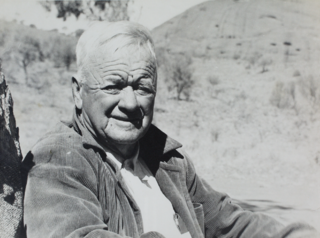
William Edward Harney, best known as Bill Harney, was an Australian writer. Most of his early life was an itinerant one of poverty and hardship, punctuated by tragedy, spent mainly in the outback. He is notable for his writings about the Aboriginal peoples of Australia's Northern Territory.
Cecil William Holmes was a New Zealand-born film director and writer.
Essington is a 1974 TV film about a convict named Squires who arrives with a detachment of Royal Marines at Port Essington.
Corruption in the Palace of Justice is a 1964 Australian television film produced by Oscar Whitbread. Based on an Italian stage play by Ugo Betti, it was a drama aired in a 60-minute time-slot and aired on the non-commercial broadcaster the Australian Broadcasting Commission. The cast included Michael Duffield, Carl Bleazby and Terry Norris. It was produced in Melbourne. It was adapted by Robert Rietti. A copy of the script is at the NAA.
Our Living Stone Age is a 1963 book by Ion Idriess about Australia aboriginals.
Christopher Muir was an Australian director and producer, notable for his work in TV in the 1950s and 1960s. In the 1980s he was head of ABC Television drama.
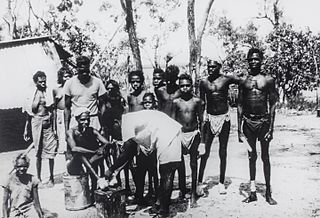
Phillip Waipuldanya Roberts OBE was a traditional doctor, activist and adviser to the Commonwealth Government of Australia on Aboriginal policies and programs.
Patrick Barton is an Australian TV director best known for his productions in the 1960s.
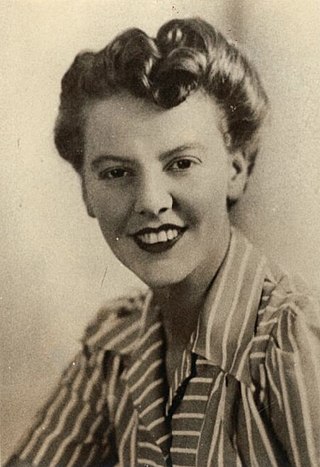
Elizabeth Fulton Salter was an Australian biographer and crime novelist. She was secretary to Edith Sitwell from 1957 until the latter's death in 1964.
Nation was an Australian fortnightly periodical, published from 1958 to 1972, when it was merged with the Sunday Review to form the Nation Review.
Rose Andrew was an Australian politician.
Noela Young (1930–2018) was an Australian illustrator and author of children's books. She is best known for her illustrations for The Muddle-Headed Wombat by Ruth Park.
The Shell Aria, originally Shell Open Aria, contest was an Australian vocal competition for young classical opera singers, held annually in Canberra from 1955 to 1986, named for and sponsored by, Shell Australia in conjunction with the Australian National Eisteddfod Society.
References
- ↑ "All about Australia". The Canberra Times . Vol. 46, no. 13, 049. Australian Capital Territory, Australia. 19 February 1972. p. 12. Retrieved 31 May 2016– via National Library of Australia.
- ↑ "Remarkable Man Of Two Worlds". The Canberra Times . Vol. 37, no. 10, 409. Australian Capital Territory, Australia. 15 December 1962. p. 18. Retrieved 31 May 2016– via National Library of Australia.
- ↑ "Aboriginal Theme Winner". The Canberra Times . Vol. 36, no. 10, 176. Australian Capital Territory, Australia. 17 March 1962. p. 3. Retrieved 31 May 2016– via National Library of Australia.
- ↑ "Aborigines to get royal welcome as Kenya's guests". The Canberra Times . Vol. 39, no. 11, 020. Australian Capital Territory, Australia. 4 December 1964. p. 4. Retrieved 31 May 2016– via National Library of Australia.
- ↑ "I, the Aboriginal". The Australian Women's Weekly . Vol. 31, no. 49. Australia. 6 May 1964. p. 14. Retrieved 31 May 2016– via National Library of Australia.
- ↑ "Praise for Australian film award winners". The Canberra Times . Vol. 39, no. 11, 161. Australian Capital Territory, Australia. 21 May 1965. p. 17. Retrieved 31 May 2016– via National Library of Australia.
- ↑ Le Brun Holmes, Sandra (1 September 1963). "To the islands". Walkabout. 29 (9): 32–35.